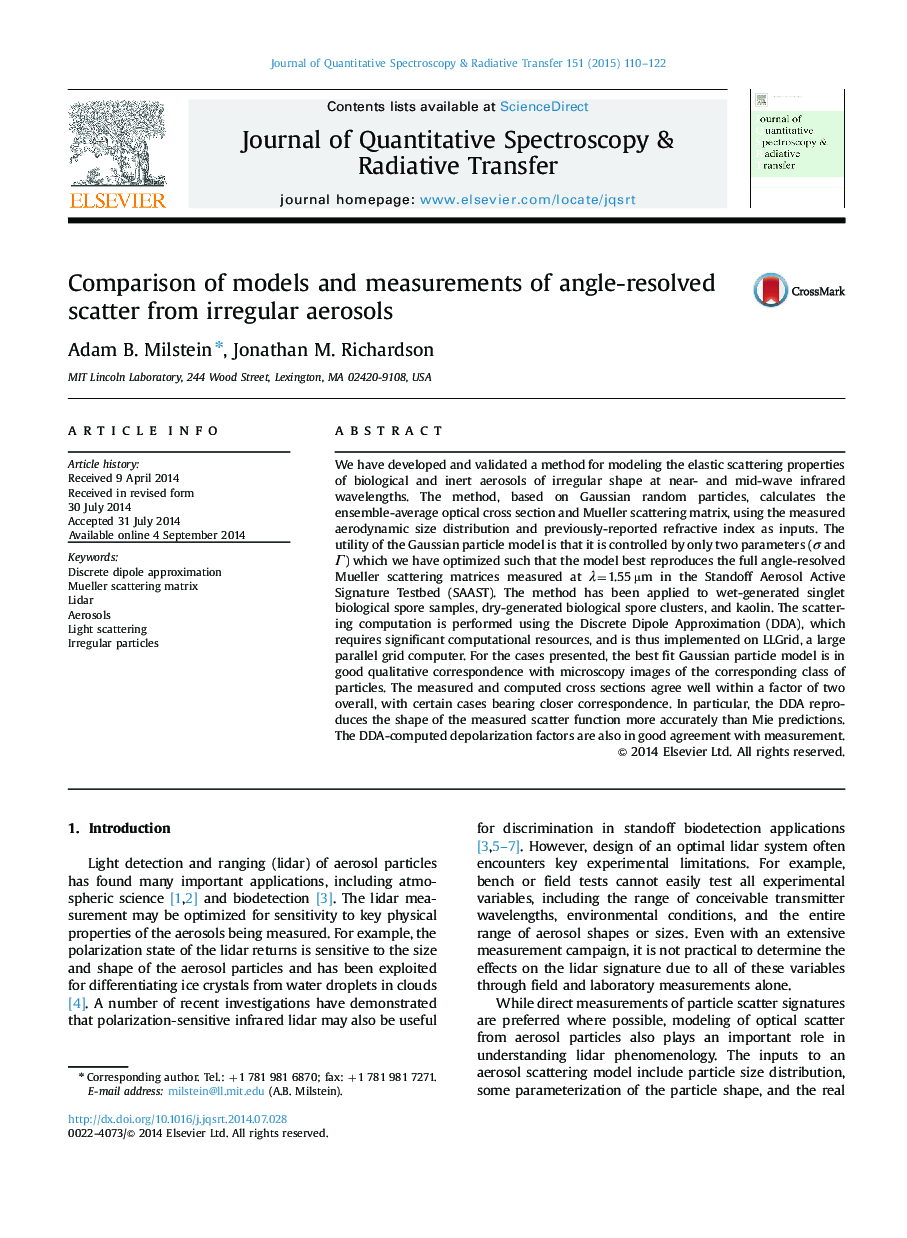| Article ID | Journal | Published Year | Pages | File Type |
|---|---|---|---|---|
| 5428161 | Journal of Quantitative Spectroscopy and Radiative Transfer | 2015 | 13 Pages |
â¢We model elastic scattering of biological and inert aerosols of irregular shape.â¢We calculate cross sections and Mueller matrix using random particle shape model.â¢Scatter models employ refractive index and measured size distribution as inputs.â¢Discrete dipole approximation (DDA) with parallelization enables model calculations.â¢DDA-modeled cross section and Mueller matrix agree well with measurements at 1.55 μm.
We have developed and validated a method for modeling the elastic scattering properties of biological and inert aerosols of irregular shape at near- and mid-wave infrared wavelengths. The method, based on Gaussian random particles, calculates the ensemble-average optical cross section and Mueller scattering matrix, using the measured aerodynamic size distribution and previously-reported refractive index as inputs. The utility of the Gaussian particle model is that it is controlled by only two parameters (Ï and Î) which we have optimized such that the model best reproduces the full angle-resolved Mueller scattering matrices measured at λ=1.55 µm in the Standoff Aerosol Active Signature Testbed (SAAST). The method has been applied to wet-generated singlet biological spore samples, dry-generated biological spore clusters, and kaolin. The scattering computation is performed using the Discrete Dipole Approximation (DDA), which requires significant computational resources, and is thus implemented on LLGrid, a large parallel grid computer. For the cases presented, the best fit Gaussian particle model is in good qualitative correspondence with microscopy images of the corresponding class of particles. The measured and computed cross sections agree well within a factor of two overall, with certain cases bearing closer correspondence. In particular, the DDA reproduces the shape of the measured scatter function more accurately than Mie predictions. The DDA-computed depolarization factors are also in good agreement with measurement.
